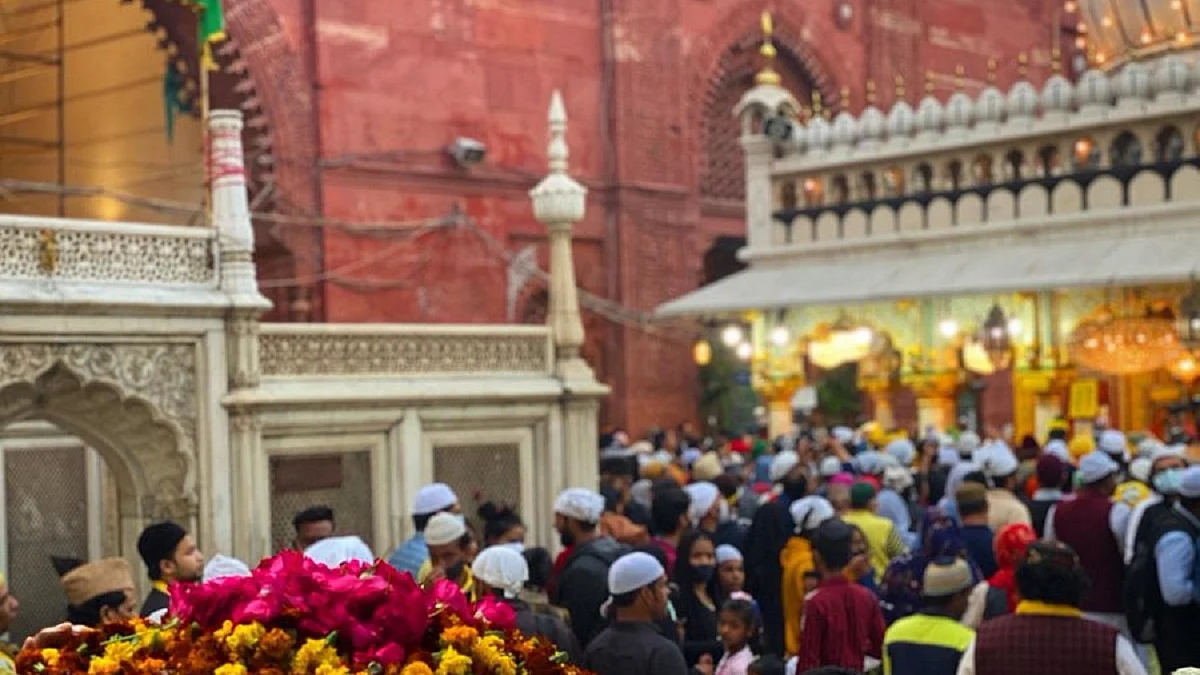Celebrating spiritual hues of Basant at Dargah Nizamuddin Auliya
In lanes of Nizamuddin, some rituals like dyeing of clothes in mustard yellow and carrying saplings of mustard take place. Hundreds of visitors are seen donning yellow scarves and singing folk songs

aaj basant manaley suhagan…
Basant celebration at the sufi shrine of Hazrat Nizamuddin Auliya, Delhi has been a tradition since time immemorial where devotees of the saint throng around and mark their presence in the holy precincts of the dargah. Basant is traditionally celebrated not only by the Hindus, but also by many Muslims in India. It is believed that the Chishti Sufis might have begun the celebration of Basant amongst Indian Muslims in the 12th century.
Compared to the splendour of Basant in the past, what we find today in the Dargah of Nizamuddin at Delhi seems more ritualistic and festive.
In the lanes of Nizamuddin, some rituals like dyeing of clothes in mustard yellow and carrying saplings of mustard take place. Hundreds of visitors and devotees are seen donning yellow scarves, stoles and headgears and singing folk songs.
The Chishti Sufis too, have not only tried to relate to the Indian culture and music, they even experimented and enriched the various cultural forms. Basant/spring is a living example of that. In the prevailing scenario, when communities are being forced into polarization such an event plays a significant role in bringing all faiths together defying prejudices.
Kashif Nizami, the in charge of dargah elaborated on how the festival of Basant started here. He emphasized on the amalgamation of varied faiths into one that is the beauty of Hindustan. This mystic view is far beyond the barbed barriers of religions.
The group of musicians recites the poetic verses penned by the legendary poet Hazrat Amir Khusrau, based on Hindustani Raag Bahar. The qawwali is recited even inside the tombs of the saint on the occasion.
There is an event that marks the history about celebrating Basant at dargah. The story goes back to the time of Hazrat Nizamuddin Auliya, who lived from 1238 to 1325, after whom the dargah was named. Nizamuddin Auliya was a saint of the Chishtiya silsila (order), one of four major Sufi orders in India. It was started by Khwaja Moinuddin Chishti, whose dargah is in Ajmer, Rajasthan. Khwaja Qutbuddin Bakhtiyar Kaki, is popularly called Qutub Sahab, whose dargah is in Delhi's Mehrauli, a locality in southwest Delhi. Baba Farid, in Pakpattan, Pakistan's Punjab province, succeeded Kaki, and Baba Farid was succeeded by Hazrat Nizamuddin. The dargah remains abuzz with pilgrims, devotees and backpackers.
Altamash Nizami, a direct descendant of Nizamuddin Auliya tells a tale about the origin of Basant celebrations here. Hazrat Nizamuddin did not have his own kids but was deeply attached to his sister’s son, Khwaja Taqiuddin Nuh. He lost Nuh to an illness, which immensely saddened the saint, who spent most of his time in mourning.
His followers, particularly Hazrat Amir Khusrau, wanted to restore his lost smile. One day, Khusrau saw a group of village women dressed in yellow, carrying mustard flowers and singing on the road near the Khwaja’s chilla-khanqah, a retreat where he had spent his life reaching out to people, which is located behind the Humayun’s tomb. Khusrau asked the women where they were going dressed like that. They replied that they were going to the temple to offer flowers to their god. Khusrau then asked them whether this would please their god. When they said it would, Khusrau immediately dressed up in yellow, and carried mustard flowers, went before the saint singing ‘sakal ban phool rahi sarson’!.
Seeing his favourite disciple dressed so beautifully, he was cheered by the singing and eventually broke into a smile. This was commemorated as an occasion for rejoicing, and since then his followers have celebrated the onset of Basant by dressing up in yellow carrying mustard flowers and singing qawwali. Visitors join the scouting musical group which goes through the by-lanes of the settlement, halting briefly at the grave of Khwaja Tajuddin Nuh, the saint’s nephew, before they finally go to the dargah. Inside the dargah, the singers take out yellow sheets that they carry holding above their heads.
The ceremonial prayer inside the Dargah is led by the sajjadanasheen, a descendant of the saint who looks after the shrine. He places a yellow sheet and mustard flowers at the saint's grave followed by the qawwali recital.
The entry of women is strictly restricted inside the mausoleum.
Khwaja nijamuddin ke darwaje pe aawan keh gaye aashiq rang aur beet gaye barson sakal ban phool rahi sarson
This celebration begins around 4 and goes on till 7 in the evening:
Follow us on: Facebook, Twitter, Google News, Instagram
Join our official telegram channel (@nationalherald) and stay updated with the latest headlines
